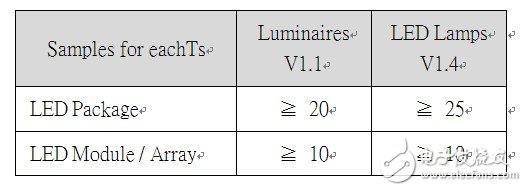The Environmental Protection Agency (EPA) and the Department of Energy (DOE) have successively released Energy Star® and LighTIng Facts standards for LED light fixtures / bulbs since 2010 The specifications of LED lighting products have been followed. At present, the international LED manufacturers have based on the life evaluation and product specifications of LED products. In other words, if LED manufacturers want to enter the international LED lighting market, they must obtain the LED Energy Star certification ticket.
In the ENERGY STAR section, on July 6, last year (2011), in order to simplify the qualification review process, the EPA specifically integrated the two large-scale lamp specifications for residential lighting (RLF) and solid-state lighting (SSL Luminaires) into [ENERGY STAR ® Luminaires Program Requirement V1.1], and stipulates that it will be formally implemented on April 1, this year (2012). In addition, the lamp part will also be integrated into [ENERGY STAR® Program Requirements for Integral LED Lamps V1.4], two specifications In addition to the increase in the number of audited data items, it should be that the requirements of [LM-82 Photoelectric Characteristics Specification] and [TM-21 Life Prediction Specification] have been included.
LM-82 is currently not officially published by the North American Lighting Association (IESNA). Its content is mainly the characteristics verification method of the electrical and optical characteristics of LED Light Engines and Integrated LED Lamps at different temperatures. The measurement method is similar to LM-79 -08 plan, but the focus is on the evaluation of the influence of temperature on the characteristics of electrical / optical parameters.
The other part is TM-21-11 (ProjecTIng Long Term Lumen Maintenance of LED Light Sources) published by IESNA on July 25, 2011. This specification is mainly for the prediction of LED light source performance and life, and the LM-80-08 LED lumen maintenance rate experiment is connected, and the experimental data of LM-80-08 is used to estimate the long-term life performance of LED components and lamps / bulbs.
1. Using TM-21 to estimate the life steps of LED lamps
In order to make LED manufacturers have a clearer concept of TM-21 and understand how to make good use of TM-21 to estimate LED products, the author will explain the application and estimation of LM-80-08 and TM-21-11 in four procedures the way:
Step 1: The LED component supplier conducts LM-80-08 experiment with at least 6,000 hours of 3 temperatures (55 ° C / 85 ° C / optional temperature) for its LED Source (Package / Array / Module).
Sample number requirements: (Related to the estimated time)

Test time requirements: (connected to estimation accuracy)
At least 6,000 hours, 10,000 hours is recommended. The test LED light attenuation data needs to be obtained every 1,000 hours. The shorter the interval time (eg, 500 hours) can improve the accuracy of the estimation.
Step 2: Estimate the long-term life data of 3 test temperatures (55 ℃ / 85 ℃ / optional temperature) according to TM-21-11 formula.
Obtain the average value of the experimental data of each temperature, and the rule of taking out the test data is:

Heavy Duty Connector, also known as HDC, is widely used in construction machinery, textile machinery, packaging and printing machinery, tobacco machinery, robots, rail transit, heat runner, electric power, automation and other equipment requiring electrical and signal connection. The international advanced features of Heavy Duty Connectors in structural design and material usage make the connectors outstanding in electrical performance.The reliability of the electrical connection system can not be achieved by the traditional connection method
Heavy Duty Connectors
Ip68 Connector,Heavy Duty Connector,Heavy Duty Cable Connectors,Heavy Duty Electrical Connectors
Suzhou WeBest Electronics Technology Co.Ltd , https://www.webestet.com